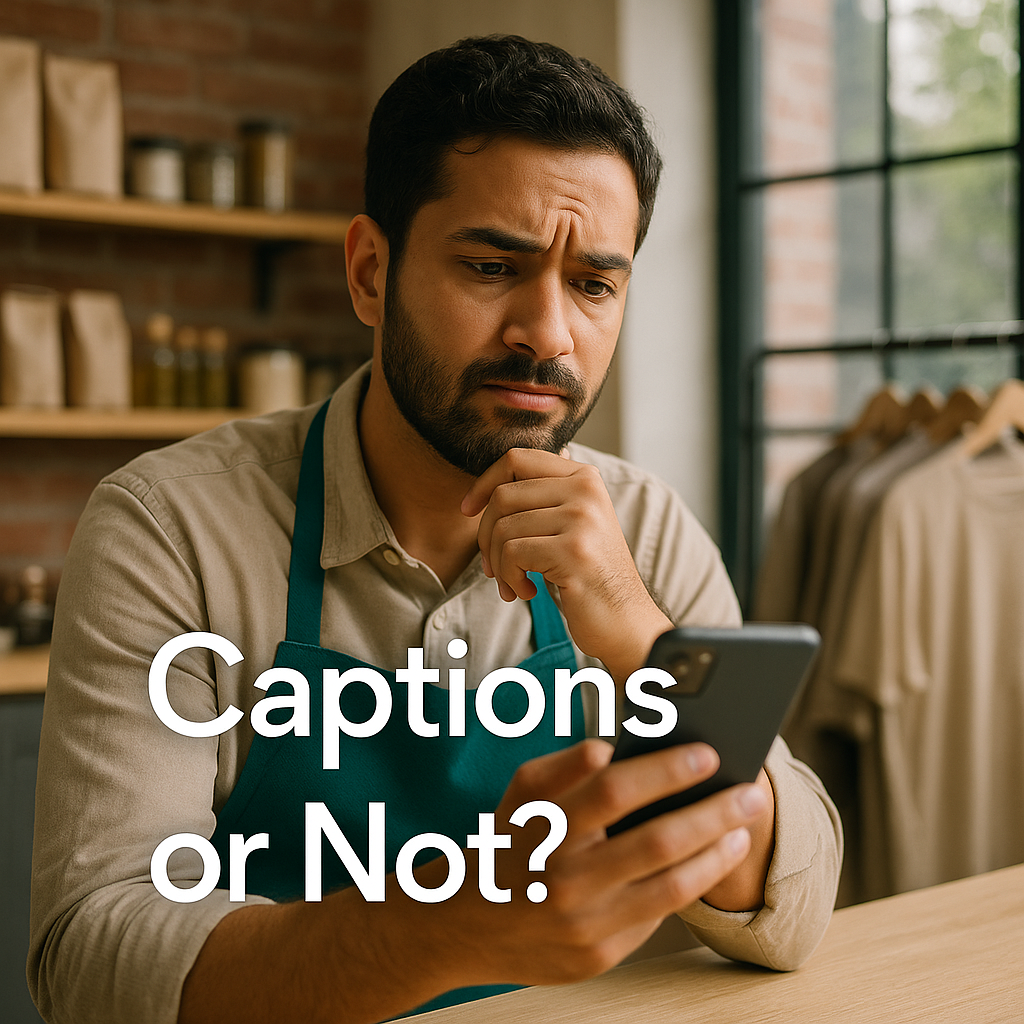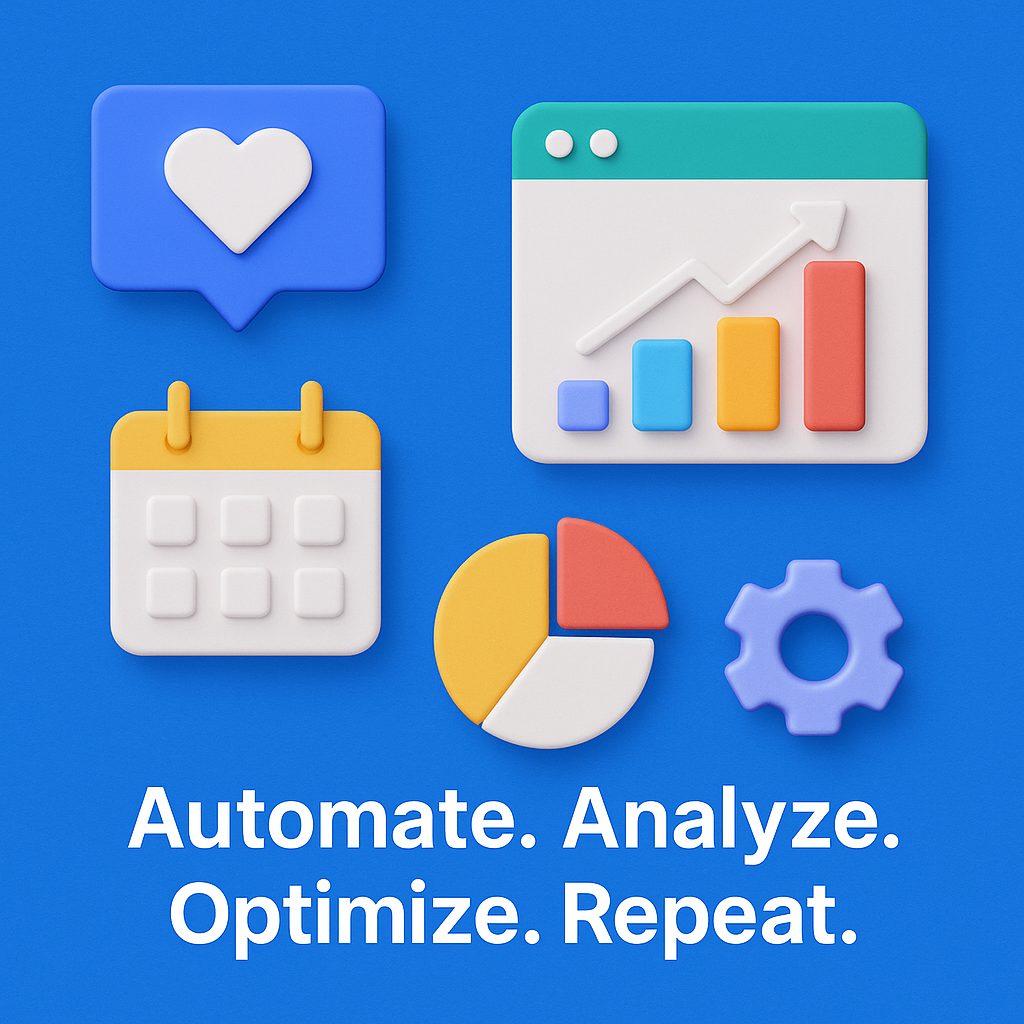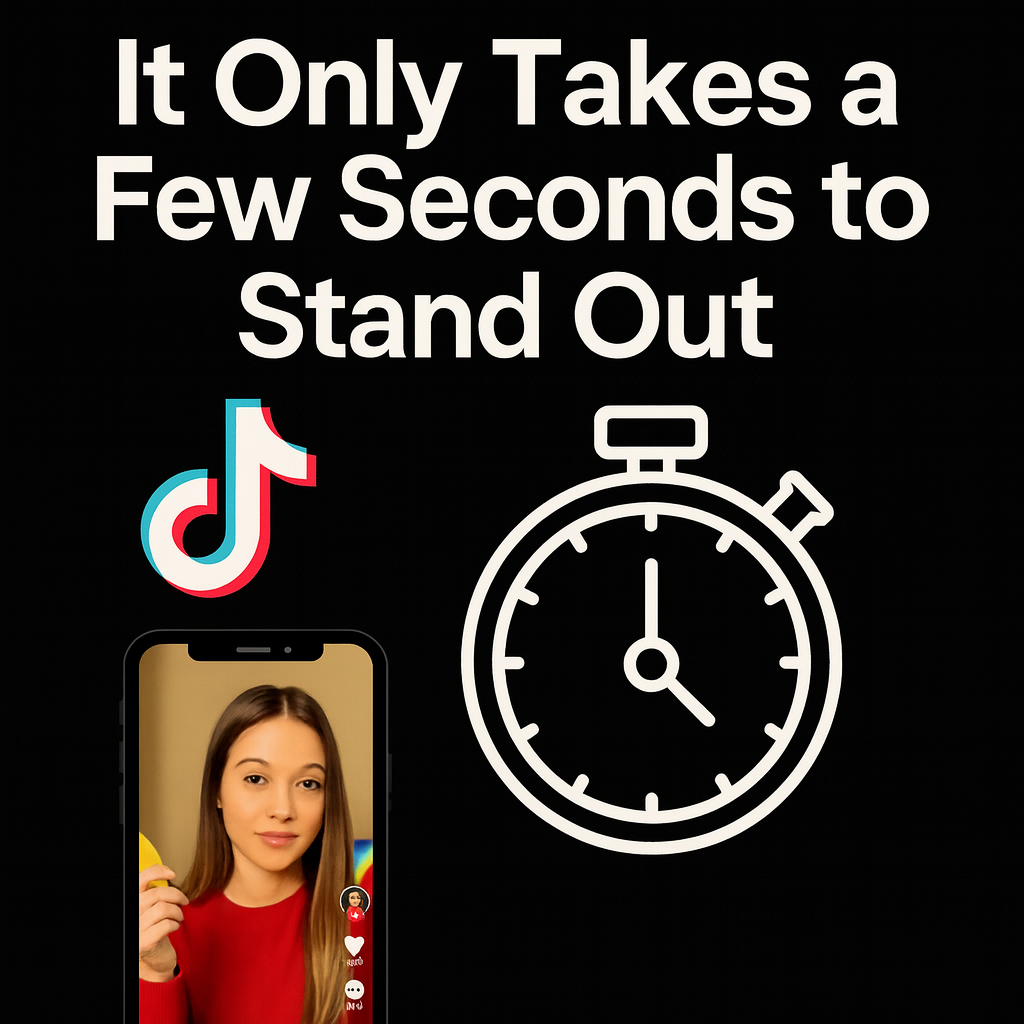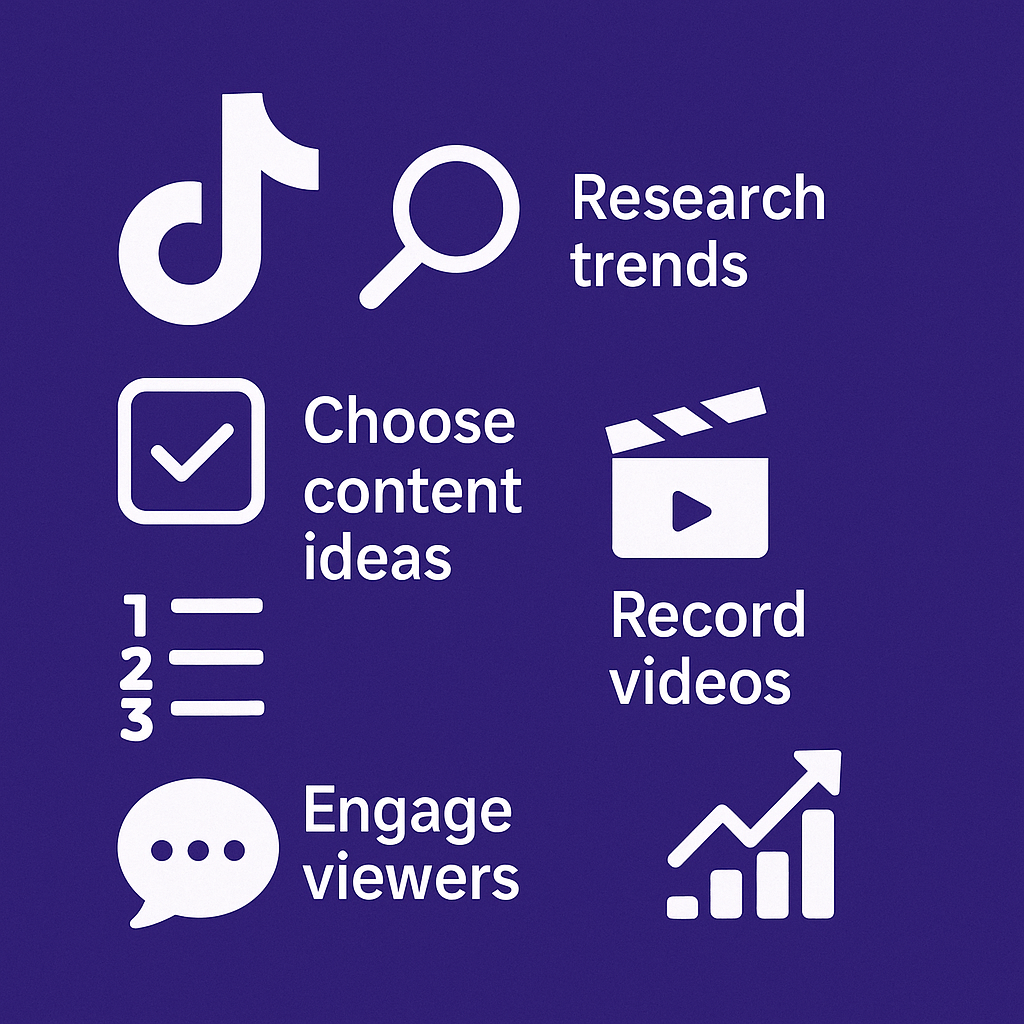Can a Simple Social Media Plan Make a Difference?
“I’m posting every day, but nothing’s working.”
“We need more followers.”
“What’s the point of all this, anyway?”
If any of these sound familiar, you’re not alone. Most small businesses, creators, and even digital marketers are caught in a loop of random content creation—posting on a whim, chasing trends, and hoping something sticks.
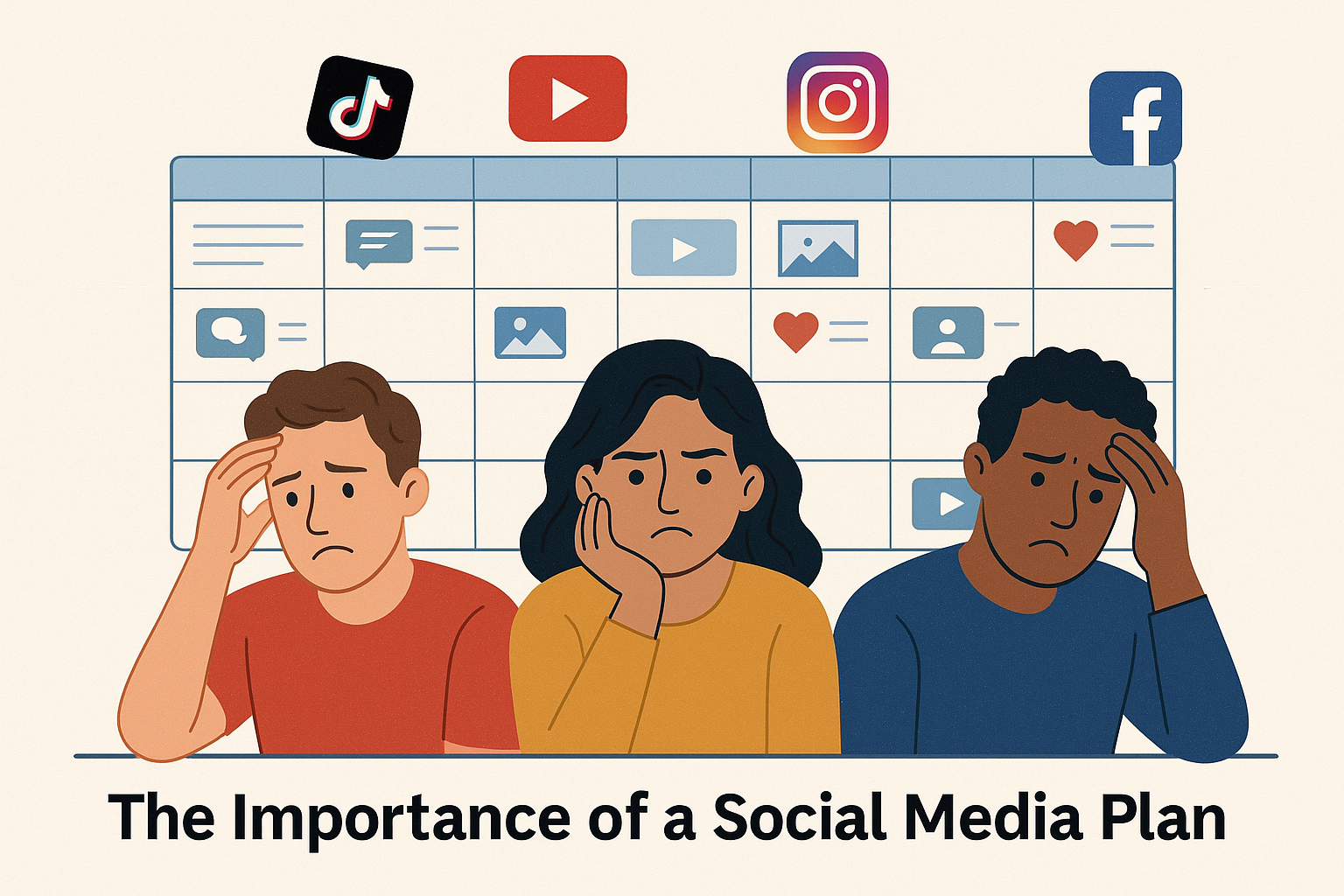
But what if the missing piece wasn’t more effort, more content, but simply a plan?
Not a vague intention. Not a bullet list of post ideas scribbled in your Notes app.
We’re talking about a real, structured, strategic social media plan—one that maps out your goals, themes, content cadence, and audience engagement with purpose.
So, we decided to put it to the test. What happens when you stick to a social media plan—not for a quarter, not for a year—but for just 30 days?
The results? Surprisingly transformative.
2. The Starting Point: Chaos, Burnout, and Random Posting

Before implementing a plan, the reality for many businesses is… messy.
There’s no calendar, no themes—just last-minute posts made out of obligation. The result? Inconsistent messaging, low engagement, and a nagging feeling of burnout. It feels like shouting into the void.
Take the example of a small fashion boutique owner in Jakarta. Like many small business owners, she juggled everything—inventory, customer service, even social media. Her Instagram feed was a patchwork of product shots, rushed sale announcements, and the occasional quote post. Some weeks, she posted five times. Other weeks? Nothing.
Do you struggle with managing multiple social media platforms for your brand's presence?
The Sociosight app can help you simplify the process and save you time. With Sociosight, you can publish, schedule, and monitor posts and engage with your followers across multiple social media platforms, all from one dashboard.
Get started today with a free sign-up!
Register Now for Free

Her followers didn’t know what to expect. And frankly, neither did she.
The effort was there, but without a clear social media plan, it lacked direction. There were no content pillars, no consistent call-to-action, and no rhythm.
This isn’t unique to fashion.
A local café in Bali that we spoke to had a similar problem. They posted Instagram Reels about gorgeous latte photos occasionally, but missed out on storytelling—no behind-the-scenes, no team intros, no user-generated content. When engagement dropped, they assumed the algorithm was the problem.
But the real issue? Random posting without a cohesive plan!
The truth is: content without strategy is just noise.
And for many brands—across industries like retail, F&B, wellness, education, even SaaS—that noise is costing them reach, trust, and opportunity.
So the big question becomes: what changes when you stop winging it and start following a real plan?
Let’s find out.
3. Designing the Social Media Plan
So, what does a real social media plan look like?
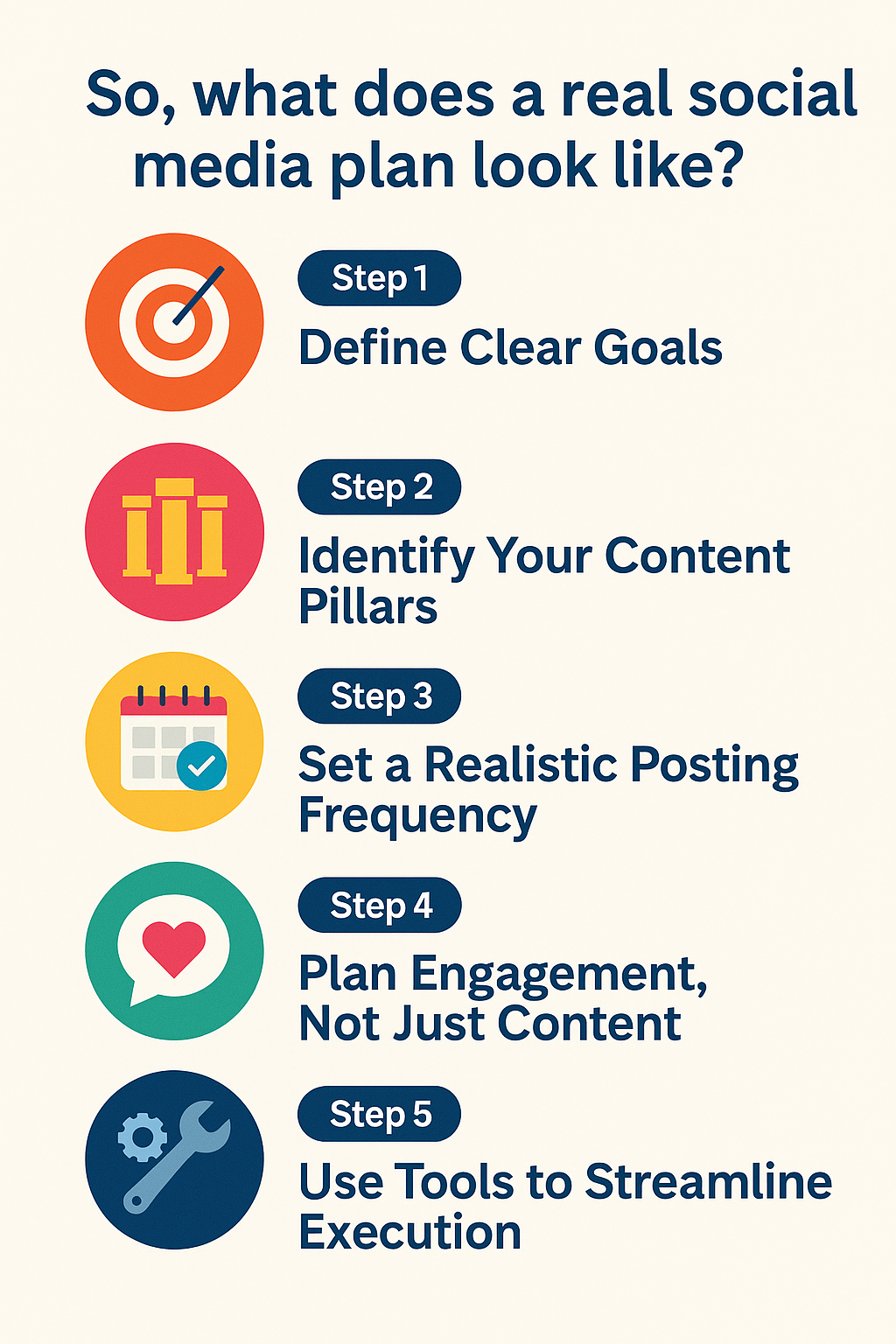
It’s not about being everywhere, every day. It’s about showing up with clarity and consistency, aligned with your brand goals and your audience’s interests.
Let’s break down how the 30-day plan was designed, based on what works for small businesses, and show how a local business put it into action.
Table of Contents
Step 1: Define Clear Goals
You can’t measure what you don’t define. Before scheduling anything, set one or two clear, achievable goals for the 30 days. This keeps your efforts focused and purposeful.
Examples:
- Grow Instagram followers by 10%
- Increase post engagement rate by 20%
- Drive traffic to a new product page
Real example: A skincare brand in Bandung, Indonesia, set a goal to boost engagement and community trust. Instead of focusing on sales, their goal was to increase replies and comments on educational skincare content.
Step 2: Identify Your Content Pillars
Content pillars are the backbone of your strategy. Choose 3–5 recurring themes that reflect your brand and resonate with your audience.
Examples:
- Product education
- Behind-the-scenes
- User testimonials
- Tips & how-tos
- Personal founder stories
Real example: The Bandung skincare brand chose:
- Skincare myths (education)
- Reviews from real customers (social proof)
- Product usage tutorials (how-to)
Step 3: Set a Realistic Posting Frequency
Consistency matters more than frequency. Choose a rhythm you can maintain.
Suggested rhythms:
- 3x/week (ideal for solopreneurs or small teams)
- 5x/week (great for growth-focused campaigns)
Don’t forget to plan when you’ll post. Analyze past engagement to pick optimal times (many tools or platform analytics can help).
Tip: Sociosight’s Smart Scheduler can help you pre-plan these posts without logging in every day.
Step 4: Plan Engagement, Not Just Content
A social media plan shouldn’t stop at posting. Block time for:
- Replying to comments and DMs
- Engaging with followers’ content
- Starting conversations via Stories or polls
Real example: The skincare brand set 15 minutes/day to respond to skincare questions in DMs, building stronger trust and increasing shares.
Step 5: Use Tools to Streamline Execution
Manual posting is time-consuming. A good tool helps you:
- Batch schedule content
- Preview platform-specific posts
- Monitor engagement metrics
Bonus: With Sociosight, you can also generate post ideas and analyze what’s working—all from one dashboard.
When you approach social media with structure, knowing what to post, when, and why, something powerful happens: you stop guessing and start growing.
What once felt overwhelming becomes manageable. Instead of scrambling every morning to post something, your content is prepped, scheduled, and aligned with your strategy. You reclaim your time and creativity while still showing up with consistency and value.
But we know: even with the steps laid out, starting from scratch can feel daunting.
So we’ve prepared a simple 30-day social media plan template to help you hit the ground running.
Try This 30-Day Social Media Plan Template
This table gives you a sample structure for 30 days of content. You can edit the themes, platforms, and CTAs based on your brand and goals.
| Day | Content Type | Topic/Pillar | Platform | CTA |
| 1 | Educational | Skincare Myths | IG, YT, TikTok | “Save this post” |
| 2 | Testimonial | Review: Acne Serum | IG, YT, TikTok | “Tag a friend” |
| 3 | Behind-the-Scenes | Order Packing Video | IG, YT, TikTok | “Ask us anything” |
| 4 | Tips & Tricks | Morning Routine Tips | IG, YT, TikTok | “Share this tip” |
| 5 | Engagement | Poll: What’s Your Skin Type? | IG Stories | “Vote now” |
| … | … | … | … | … |
You can start with just 3–5 posts per week, mix in different content pillars, and rotate based on what resonates with your audience. Over time, you’ll have a repeatable formula tailored to your brand.
Want to make it even easier? Try Sociosight’s scheduler and AI-powered content writing wizard, built for busy creators and SMEs just like you.
By the end of this planning phase, you have a focused, repeatable structure. No more guesswork. Just a clear roadmap guiding your posts, your tone, and your time.
Next: let’s look at what actually happened during the first 7 days of implementing this plan.
The First 7 Days: Resistance and Small Wins
Starting anything new often feels exciting… for about 24 hours. Then reality sets in.
That’s exactly what happened during the first week of following the social media plan.
At first, it felt empowering to have content prepared in advance. Posts were scheduled, themes were aligned, and captions were written with intention. But by Day 3, the temptation to skip a post crept in. It was a long day. Engagement felt low. “Will anyone even notice if I just… don’t?”
This is where many people give up—not because the plan doesn’t work, but because it takes discipline to stay consistent before the results appear.
But here’s the key: even in the early days, small wins started to show.
Win #1: Consistency Built Confidence
For a small home café in Surabaya, showing up on Instagram every other day—even with simple behind-the-scenes posts and daily specials—made them feel more professional. Customers started saying, “I saw your post today,” which had never happened before.
It wasn’t viral. It was consistent. And that mattered more.
Win #2: The Algorithm Responded
By Day 5, engagement had already begun to climb. Instagram Stories started getting more views. A Reel with a simple tip (“3 Ways to Keep Skin Hydrated”) got more shares than usual—not because it was trendy, but because it was planned with purpose and posted at a time when followers were active.
Win #3: Conversations Sparked
Instead of passive likes, posts started inviting actual responses.
A poll asking, “What’s your biggest skincare struggle?” triggered over 70 responses in 24 hours—providing direct audience insights and sparking DMs that turned into leads.
Reminder: The Plan Isn’t Meant to Be Rigid
Some days, you may need to tweak a post or respond in real-time to something trending. That’s okay. The beauty of having a social media plan is that it gives you structure, but still leaves room for spontaneity.
You’re no longer starting from zero. You’re building on a strong foundation.
And by the end of that first week, one thing became clear: showing up with intention, even for 7 days, already felt different. Sharper. Lighter. More in control.
So what happens when that momentum carries into Weeks 2, 3, and 4?
Let’s talk results.
Midpoint Check-In: Momentum Builds, Analytics Improve
By Day 15, the difference was undeniable.
Sticking to a consistent social media plan didn’t just feel better—it started delivering visible, measurable progress. For the first time, posting wasn’t a chore. It was strategic. It had rhythm. And it was working.
Engagement Metrics Started Climbing
Even brands that had previously struggled with low interaction saw improvements.
A local wellness coach in Yogyakarta, who typically averaged 20–30 likes per post, started hitting 70+ likes and receiving more thoughtful comments. What changed? Her posts were now tied to a theme—“Mindful Monday,” “Wellness Wednesday,” and “Friday Wins”—making her content predictable, useful, and easier to engage with.
Instagram’s algorithm noticed too. Because she was posting consistently and getting early engagement, her reach increased by 40% in just two weeks.
Audience Insights Became Clearer
Once you follow a structured plan, patterns begin to emerge. You start to see which content types spark the most interaction—and which fall flat.
The skincare brand from Bandung, for example, realized that carousel posts with skincare routines performed much better than single-image posts. They also found that Reels posted around 6:30 PM got the highest saves and shares.
With these insights, they began optimizing their plan, tweaking formats and post times—not randomly, but strategically, based on data.
Workflow Efficiency Improved
Planning in batches meant less time stressing over what to post each morning. Teams could now spend more time engaging with their audience, responding to DMs, or preparing campaigns—rather than scrambling for content.
One small agency using Sociosight reported that what used to take them 2 hours every morning to post for 3 clients now only took 45 minutes per week using the scheduler and content calendar. That time savings translated into more bandwidth to pitch new clients.
From Routine to Momentum
By Week 2, what started as “a plan” began to feel like momentum.
You start anticipating your next post—not dreading it. You begin to enjoy the process of connecting with your audience again. You make space to test new ideas, because the basics are already covered.
And the best part? You start to believe this might actually be sustainable.
Coming up: the 30-day milestone—what changed, what didn’t, and what you can take away from the full experiment.
Day 30: Real Results from a Real Plan
30 days. One simple plan. And surprisingly big impact.
What began as a structured experiment became a turning point—not just in numbers, but in mindset. The results weren’t all viral hits or massive spikes. But they were meaningful, measurable, and most importantly, sustainable.
The Numbers Spoke Loudly
By the end of the 30 days, here’s what the skincare brand in Bandung experienced:
- Follower growth: +12%
- Average post reach: up 48%
- Engagement rate: increased from 1.8% to 3.6%
- Website clicks from Instagram bio: doubled
- Time spent creating content: cut in half (thanks to batching + scheduling)
And they weren’t alone.
A small cafe in Semarang reported a 3x increase in Story replies and 5 new customer inquiries from DM—just from consistently showing up with engaging, story-based posts that followed a clear plan.
The Brand Voice Got Sharper
When you post with intention every week, your message naturally refines. The skincare brand began to sound more confident, more consistent. Instead of constantly “selling,” they were educating, engaging, and inviting conversation.
It wasn’t just content—it was communication.
The Audience Responded with Trust
Consistency builds credibility. By Week 4, customers were commenting things like:
- “I love how informative your posts are lately!”
- “Your tips really helped me. Thank you 🙏”
- “I always look forward to your routines!”
Those aren’t just vanity comments. That’s brand trust in action.
What Didn’t Work (and Why That’s Okay)
Not every post performed well. Some carousels underwhelmed. A giveaway flopped due to unclear CTAs. But because they were tracking and analyzing everything, these flops became feedback, not failures.
They adjusted their next month’s plan using those insights, proving that even missteps are valuable when you’re working with a strategy, not guesswork.
The Real Result: Control, Confidence, and Clarity
The most powerful outcome wasn’t just in numbers—it was how these businesses felt.
They weren’t posting out of panic. They had a system. They were finally proactive instead of reactive. And most importantly, they believed they could keep doing this.
With the right tools, clear goals, and a realistic schedule, a social media plan isn’t just for big brands or agencies. It’s for every small business, freelancer, and creator who wants to turn effort into real results.
Next up: Want to try it for yourself? In the final section, we’ll help you get started.
What You’ll Learn from 30 Days of Discipline
After 30 days of showing up with intention, one truth becomes crystal clear:
Success on social media isn’t about luck. It’s about alignment.
Not just aligning content with trends, but aligning your strategy with your values, your audience, and your capacity.
Here’s what most creators and small business owners learn once they stick to a real social media plan:
1. Consistency Beats Creativity Alone
You don’t need to reinvent the wheel every day. The most effective brands often repeat core messages in different ways. It’s not about being wildly original—it’s about being consistently valuable.
2. Burnout Comes from Chaos, Not the Work Itself
Posting every day doesn’t have to drain you—if you batch, plan, and schedule wisely. The exhaustion stems from the mental load of making last-minute decisions, not from the content creation itself.
3. Data Makes You Smarter
When you follow a plan, you create patterns, and patterns reveal insights. You’ll quickly learn what resonates, what converts, and what to double down on. No more shooting in the dark.
4. A Plan Is Repeatable (So You Don’t Have to Start Over Every Month)
That’s the beauty of this system: once you’ve done 30 days, you have a blueprint. You can tweak it, improve it, and even automate parts of it. But you’ll never have to start from zero again.
5. Showing Up Builds Trust—Not Just Reach
The algorithm might reward you, sure. But more importantly, your audience will notice. They’ll start expecting your content. Engaging with it. Trusting you. And that is the foundation of real brand growth.
It’s not magic. It’s momentum.
And it starts with one decision: to stop winging it and start planning with purpose.
Next up: we’ll walk you through how to create your 30-day plan—and give you a free tool to make it easier.
Your Turn: Create a 30-Day Social Media Plan That Works
You’ve seen the impact a simple, focused plan can make.
Now, it’s your turn.
You don’t need a huge team or a massive ad budget. You just need a clear direction—and the discipline to stick with it for 30 days.
Here’s How to Start:
- Define Your Goal
What do you want to achieve in 30 days? More engagement, leads, or consistency? - Pick 3–5 Content Pillars
Choose themes you can rotate: education, behind-the-scenes, product tips, testimonials, etc. - Plan Your Posting Schedule
Choose how many times per week you’ll post and block out time to batch content. - Use the Template
Use the template table we mentioned earlier. Customize it to your needs. - Stick to the Plan—and Track Your Progress
Check your analytics every week. Adjust as needed. Small shifts make a big difference.
Want to Make It Even Easier?
If you’re tired of juggling posts manually or struggling to stay consistent, we built a tool just for you.
Sociosight helps small businesses and creators:
- Plan & schedule content with a visual calendar
- Analyze performance with simple insights
- Use AI to generate post ideas based on your brand
- Manage your content flow—without chaos
Try it free today, and see how easy it can be to stay consistent, strategic, and sane on social media. Subscribe to the Sociosight Standard Plan lifetime deal here, or contact us via web chat, email, or IG @sociosight.
Final Word
Sticking to a social media plan for 30 days won’t solve every challenge, but it might just shift the way you show up online, permanently.
You’ll build confidence.
You’ll build rhythm.
And most importantly, you’ll build a connection.
So why not start today?






